Digital Poster
AI for Diagnosis/Prognosis: Body III
ISMRM & ISMRT Annual Meeting & Exhibition • 10-15 May 2025 • Honolulu, Hawai'i

 |
Computer Number: 17
1546. An
MR breast auto prescription on-site learning system to adapt
different scan plan preferences: a proof-of-concept study
C. Wang, H. Yang, L. Zhang
Canon Medical Systems (China), Beijing, China
Impact: The proof-of-concept study verifies the proposed
on-site learning system's feasibility by in-house
simulation. The system could automatically train auto
prescription models adapting to different scan orientation
preferences, and it is expected to be extended to other scan
ROI parameters.
|
|
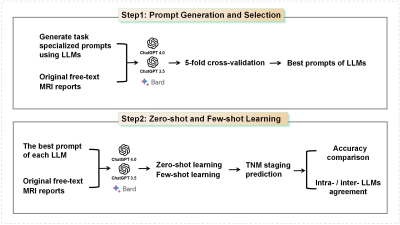 |
Computer Number: 18
1547. Promoting
LLMs for Breast Cancer TNM Staging Using Radiology Reports:
Comparing Different Prompts and Models
W. Xu, Z. Ding, Q. Shen, Y. Shan, S. Pan, Z. Li, L. Cao, M.
Ruan
Hangzhou First People's Hospital Affiliated of Westlake University School of Medicine, Hangzhou, China
Impact: This study demonstrates the potential of LLMs,
especially ChatGPT 4.0, in automating breast cancer TNM
staging from DCE-MRI reports. The effectiveness of few-shot
learning suggests a pathway for rapid adaptation of AI in
radiology, potentially enhancing diagnostic efficiency and
accuracy.
|
|
 |
Computer Number: 19
1548. Fully
automatic lesion segmentation and deep myometrial invasion
prediction method for endometrial cancer based on MRI
K. Gao, H. Wu, W. Wang
the Affiliated Hospital of Inner Mongolia Medical University, Hohhot, Inner Mongolia, China
Impact: NnU-Net has the potential to automatically
identify and segment endometrial cancer lesions. The
combined model integrating radiomics features and clinical
risk factors has a better ability to identify deep
myometrial invasion.
|
|
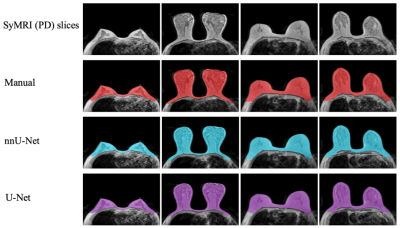 |
Computer Number: 20
1549. Automated
Deep Learning Method for Whole-Breast Segmentation in Synthetic
MRI
W. Gao, Y. Zhang, Y. Xia, Y. Xiong
The Second Affiliated Hospital of Xi 'an Jiaotong University, Xi'an, China
Impact: The nnU-Net exhibited exceptional segmentation
performance for fully automated breast segmentation of
contrast-free quantitative images.
|
|
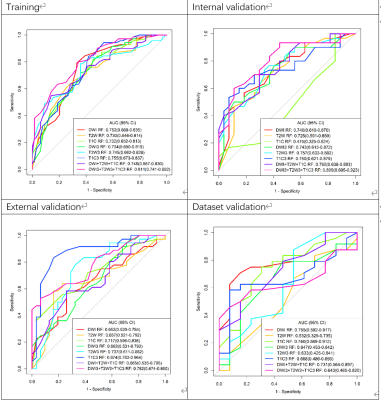 |
Computer Number: 21
1550. Research
on Predicting the Efficacy of NAC in Breast Cancer Based on a
Multisequence MRI Intratumoral Combined Peritumoral Radiomics
Model
X. Liu, Y. Cao, A. Yang, M. Cao
Qinghai University Affiliated Hospital, Xining, China
Impact: This study contributes to improving the level of
breast cancer diagnosis and treatment.
|
|
 |
Computer Number: 22
1551. Potential
time and recall benefits for adaptive AI breast MRI screening
L. Balkenende, J. Brunekreef, J. Teuwen, R. Mann
Netherlands Cancer Institute (NKI), Amsterdam, Netherlands
Impact: The AI-based hybrid protocol could improve MRI
screening by reducing acquisition time and recall rates,
enhancing patient-centric care, improving MRI availability
and achieving better breast cancer screening.
|
|
 |
Computer Number: 23
1552. MRI
subregion Radiomics for Predicting Recurrence Risk in ER+/HER2-
Breast Cancer
Y. Chen, W. Peng, J. Shi
Fudan University Shanghai Cancer Center, Shanghai, China
Impact: This study first identified radiomics signatures
using intratumoral subregional features to predict RS
accurately and cost-effectively in ER+/HER2- breast cancer.
|
|
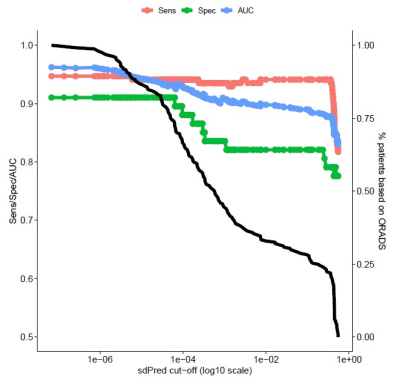 |
Computer Number: 24
1553. CNN-Certainty-Directed
Utilization of Deep Learning in Radiological Assessment of
Adnexal Masses on Pelvic MRI
D. Bonekamp, T. Mokry, N. Netzer, T. Hielscher, C.
Flechtenmacher, L. K. Nees, O. Zivanovic, H-U Kauczor, H-P
Schlemmer
DKFZ, Heidelberg, Germany
Impact: CNN-based triage of multi-parametric pelvic MRI
for assessment of adnexal masses has potential to support
radiological decision making.
|
|
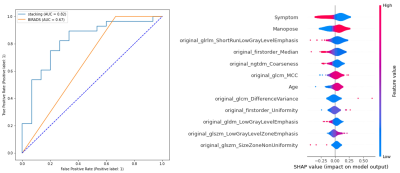 |
Computer Number: 25
1554. Assessment
of machine learning model performance to differentiate benign
and malignant breast lesion: Finding best radiomic features on
MDME MRI
H. HAQUE, T. Matsuda, M. Matsuda, S. Fuchibe, T. Kido
GE HealthCare, Tokyo, Japan
Impact: Comparing with BI_RADS, post contrast MDME
derived radiomics-based machine learning shows promising
potential in differentiating malignant breast lesion. Which
may simplify of breast image scanning protocols and
pulse-sequence-design for malignancy check.
|
|
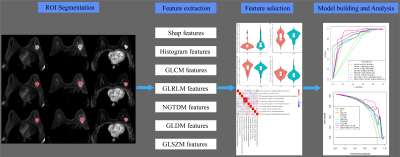 |
Computer Number: 26
1555. Value
of predicting HER-2 and Ki-67 expression status in breast cancer
based on multiparametric MRI intratumor combined with peritumor
radiomics
M. Cao, Y. cao, X. Liu, A. Yang
Affiliated Hospital of Qinghai University, Xining, China
Impact: Accurate preoperative prediction of HER-2 and
Ki-67 expression status in breast cancer is expected to
provide a reference for precise and personalized treatment
decisions in later stages of clinical practice.
|
|
 |
Computer Number: 27
1556. Deep
learning-based prediction of response to neoadjuvant
immunochemotherapy in triple-negative breast cancer based on
pretreatment DCE-MRI
Z. Fu, Y. Liu, Z. Xu, J. B. Son, X. Huo, T. Moseley, B.
Adrada, C. Yam, J. Ma, G. Rauch
The University of Texas MD Anderson Cancer Center, Houston, United States
Impact: A deep learning model has the potential to
predict TNBC response to NICT before treatment and to help
with the clinical management.
|
|
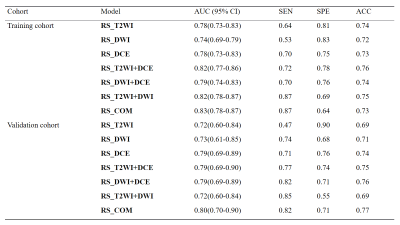 |
Computer Number: 28
1557. The
Role of Multiparametric MRI Radiomics in Predicting Axillary
Lymph Node Metastasis in Invasive Breast Cancer Patients: A
Comparative Study
Y. Chen, Y. Guo, W. Tang, S. Chen, Q. Kong, Y. Xu, X. Jiang
Guangzhou First People's Hospital, Guangzhou, China
Impact: The comparative analysis identified the optimal
combination of MRI sequences that can enhance the accuracy
of preoperative ALNM status prediction in invasive breast
cancer patients, potentially enabling the personalization of
axillary treatment strategies.
|
|
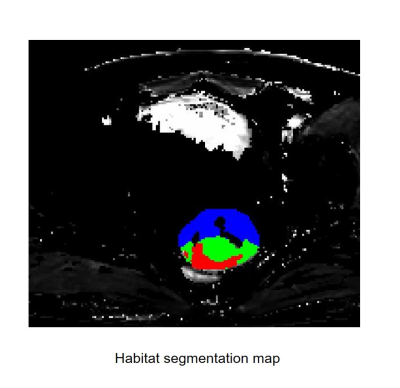 |
Computer Number: 29
1558. Prediction
of LVSI Status in Pre-treatment Cervical Cancer Using a Tumor
Ecological Model Based on DCE-MRI Quantitative Parameter Mapping
F. Li, G. Huang, K. Ai
Gansu Provincial People's Hospital, lanzhou, China
Impact: By utilizing tumor habitat imaging and
ecological analysis methods, we quantify the differences in
spatial heterogeneity within tumors to predict the LVSI
status of patients with cervical cancer and provide
biological interpretability for the behavior that gives rise
to LVSI.
|
|
 |
Computer Number: 30
1559. Automated
classification of intervertebral disc degeneration using
Pyradiomics features: XGBoost versus OnevsRest
L. T. Muftuler, A. Drobek
Medical College of Wisconsin, Milwaukee, United States
Impact: Lack of objective measures of disc degeneration
may cause uncertainties in treatment decisions. Automated
evaluation of disc degeneration streamlines the physician’s
workflow and reduce uncertainties. Using radiomics features
enables explainability and provides simple and robust
training for machine learning approaches.
|
|
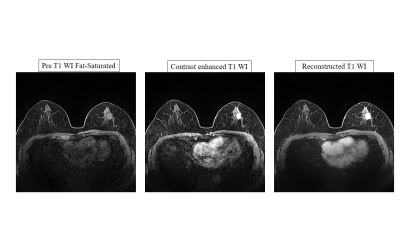 |
Computer Number: 31
1560. Breast
Cancer Detection Using Synthetic Post-Contrast MRI in Breast
Cancer Patients
S. M. Ha, Y. Lee, H. Yoen, W. K. Moon
Seoul national University Hospital, Seoul, Korea, Republic of
Impact: With increased demand for non-contrast breast
MRI due to gadolinium concerns, synthetic post-contrast MRI
offers a promising alternative, enhancing breast cancer
detection and making MRI more accessible.
|
|
 |
Computer Number: 32
1561. Based
on Multiparameter-MRI radiomic features: differential diagnosis
of BI-RADS 4 Breast lesions with DCE-TIC type II
y. li, l. zhang, s. zhao, y. wu, M. Zhang, H. Guan
The First Affiliated Hospital of Dalian Medical University, Dalian, China
Impact: This study’s multi-parameter MRI radiomics model
enhances diagnostic accuracy for BI-RADS 4 breast lesions,
offering radiologists a reliable tool for distinguishing
benign from malignant cases, reducing unnecessary biopsies,
and improving patient management in breast cancer
diagnostics.
|
The International Society for Magnetic Resonance in Medicine is accredited by the Accreditation Council for Continuing Medical Education to provide continuing medical education for physicians.